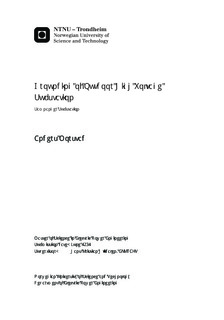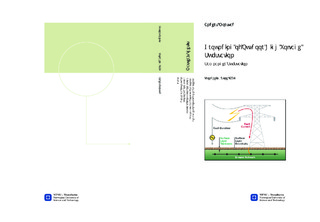| dc.description.abstract | The subsurface grounding network of high voltage substations is installed as a protective measure to prevent dangerous touch- and step voltages inside the substation area. The main objective of this master thesis is to map the different parameters that will influence the performance of the grounding system, and to what extent the performance will be affected. Samnanger substation and the electrical network connected to it are used as a basis for the simulations conducted in CDEGS AutoGrid Pro.Two different networks were used in the simulations; Network 1 with a specified two layer soil model, and Network 2 with a specified grounding network resistance to earth of 2 Ω. Network 1 was used where the simulation objective was to investigate how the resistance to earth changed with varying parameters, while Network 2 was used for all other simulations.Thirteen different simulations were conducted: Initial modeling, Insulating surface layer modeling, Varying fault duration, Varying soil conditions at Samnanger substation, Varying RE at adjacent substations, Varying Rt for overhead line towers, Varying mesh density, Varying cross sectional value of earth electrodes, Meshed network including vertical rods, Meshed network including vertical rods embedded in conductive additives, Disconnection of overhead line earth conductors, Increased single-phase-to-earth short circuit current, and Three phase short circuit current.The simulations showed that: UT < UTp inside the switchyard bays during normal conditions when tfault = 1 second, but in some of the open areas inside the substation UT > UTp. Using a 3000 Ωm-10 cm insulating surface layer and tfault = 0.06 second eliminates all dangerous UT for an Ik1 fault. Same effect for Ik3 using 3500 Ωm-20 cm surface layer and tfault = 0.06 second US < USp for all simulations The soil resistivity and its composition is decisive when it comes to UT and US The value of RE of adjacent substations have very little to neglectable effect on the grounding network performance at Samnanger The value of Rt has a large effect on the grounding network performance at Samnanger and adjacent substations Based on conditions used in this master thesis, Statnett Earthing Guidelines with respect to mesh density seems too conservative when considering 50 Hz grounding. Transient conditions have not been simulated The cross sectional value of the grounding network electrodes has little effect on the grounding network performance Vertical grounding rods have little effect in soils with high resistivity Vertical rods embedded in conductive additives were ineffective using the recommended modeling method in AutoGrid Pro | nb_NO |

